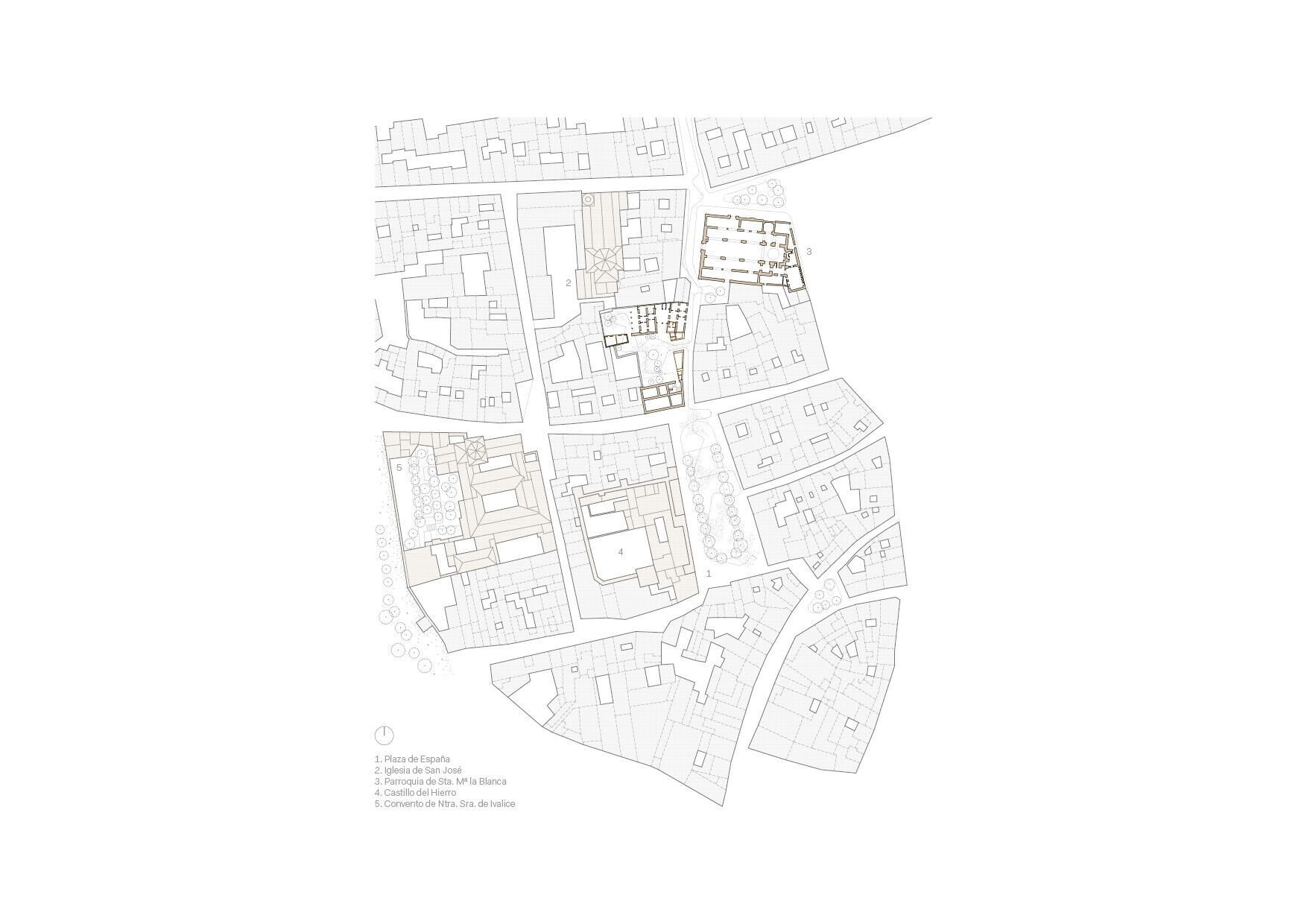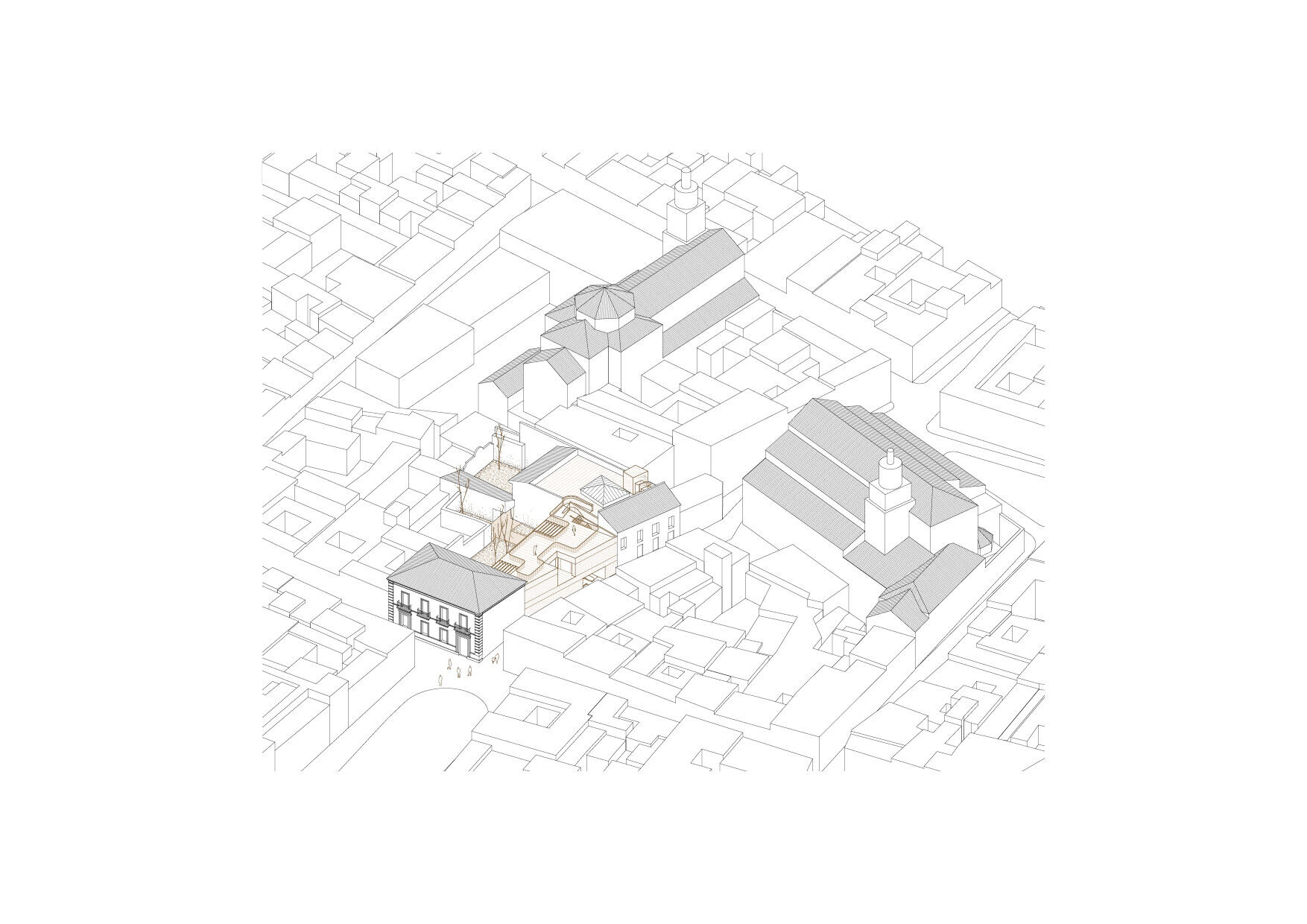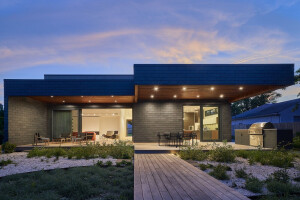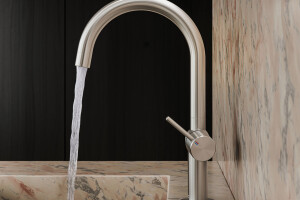The town of Fuentes is located in the Sevillian countryside, right in the Guadalquivir Valley. Its cultural and monumental richness, stemming from so many settlements, is complemented by its picturesque landscape and its historical connection to agriculture.
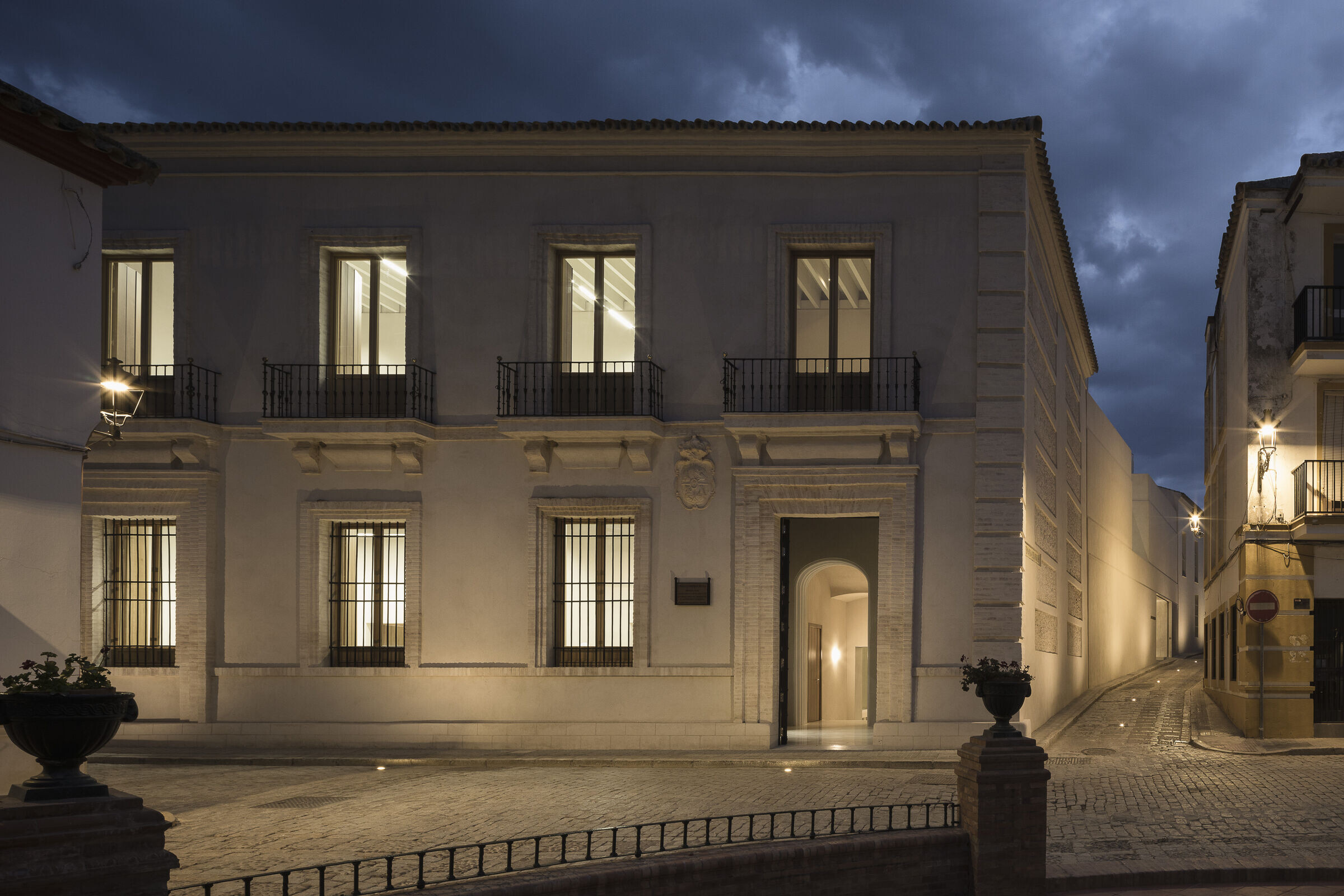
In its ancient main street, you will find its most representative public space, the Plaza de España, which once housed, among other things, the original Town Hall. In the 18th century, after its destruction in the Lisbon earthquake, a new neoclassical Town Hall was built according to the plans of the architect Ventura Rodríguez, modifying an initial proposal with a more Baroque taste by the local stonemasons Alonso Ruiz Florindo and Andrés de Carmona.
The rehabilitation and expansion works encompass the intervention on this group of buildings, along with some more recent ones of little value and a series of intermediate voids. All of them located in a protected environment where the ancient Castle, the Convent of San José, or the Church of Santa María are interspersed. In addition to its heritage interest, the outcome of the proposed intervention would be marked by a limited economic investment, which required us to focus on the most essential aspects. An efficient organization of the Town Hall, restoring and proposing traditional solutions adapted to the requirements of our time.

The memory strategy.
The intervention solves the new program by connecting the 18th-century building and the more recent municipal services building with a new volume that allows for a unified reading of the entire ensemble. After demolishing the less valuable constructions, the new building completes the block and presents itself to the street in a hermetic manner, without any visible order or openings revealing the public program it houses inside. In contrast to this massiveness, the building subtly steps up in section as it ascends to its roof, achieving a better interaction with the historic facade while also creating a sense of lightness that contrasts with its initial mass.
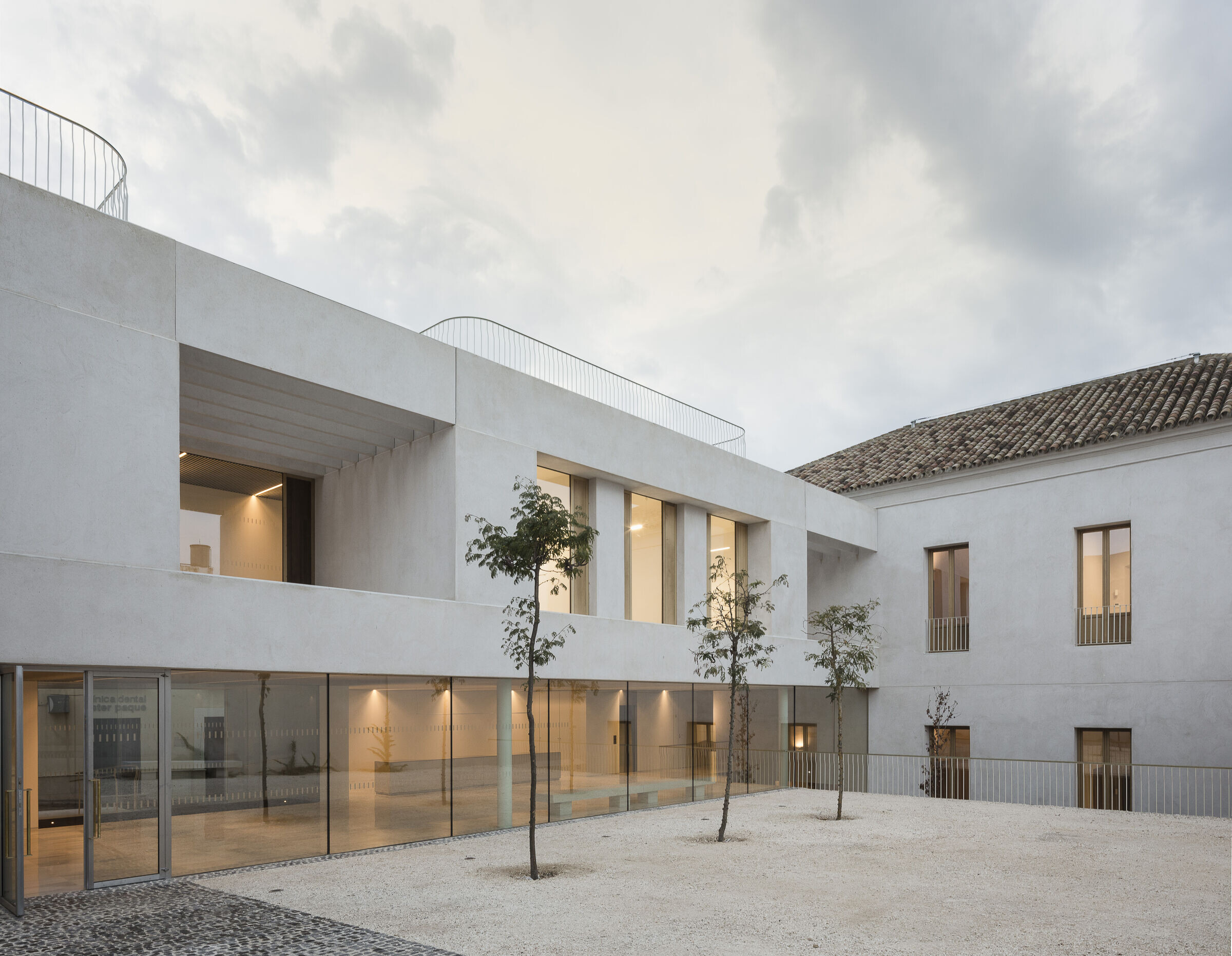
The arrangement of the program is presented with great clarity. Once you pass through this new entrance vestibule, a clear reception and service space is connected to a new outdoor public space that serves as an extension of the narrow access street. This interior void allows for the recovery of the rear facade of the historic building and, consequently, its original detached condition. This ground floor public area adjusts the connection between its different levels and the street, linking the circulation throughout the ensemble. On the other hand, the upper floor is arranged as a workspace, connecting on one side to the administrative area and on the other to the technical area. The impact on the historic building is minimized, where a sequence of courtyards and a double height space preserve the connection between them.
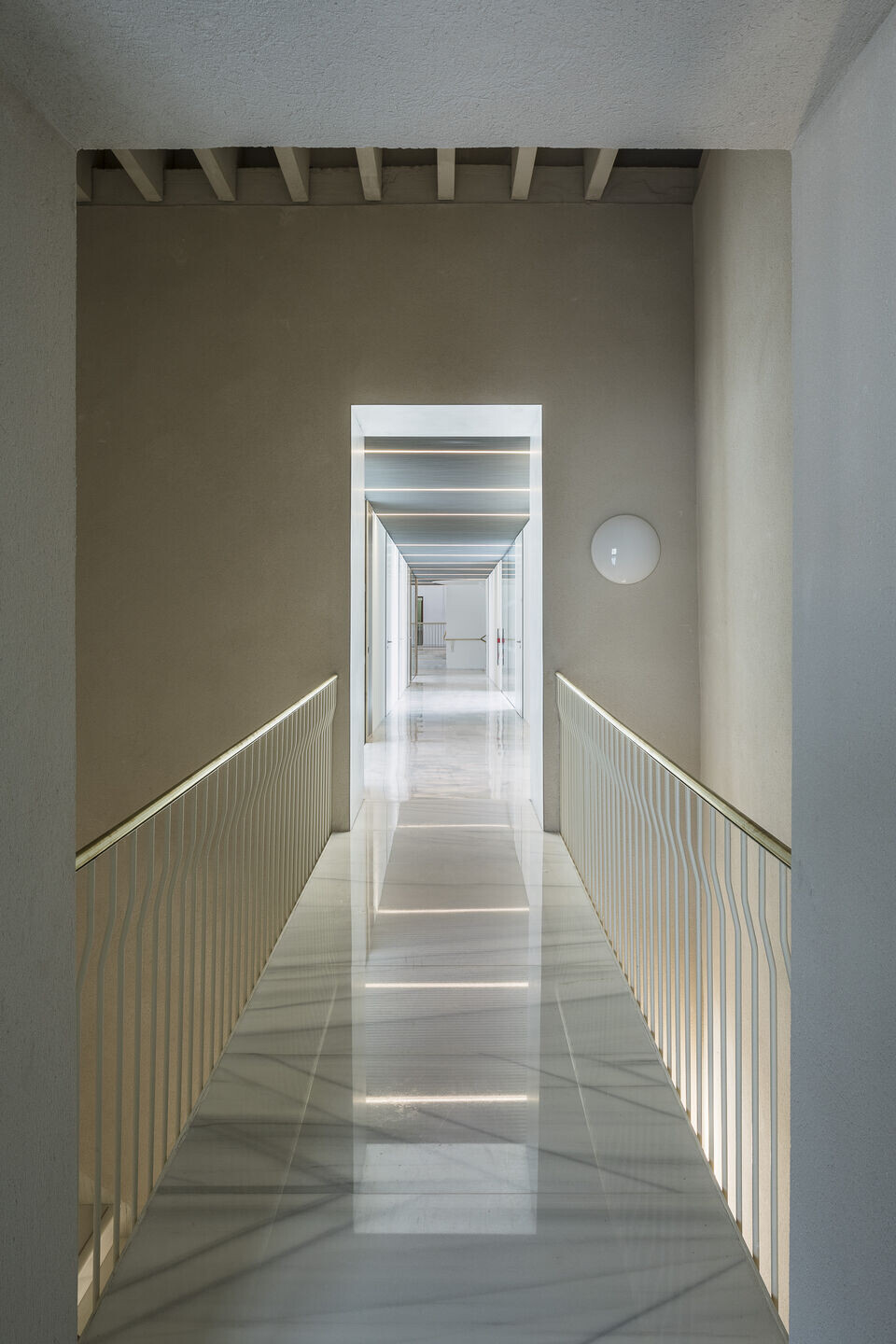
The public and open character of the Institution is reinforced by the proposal to access its rooftops. Situated within this protected environment, the proposal aimed to give this space a visitable character. Paths that connect with the tradition of bell towers and viewpoints of the town that rise at numerous points in the historic center to enjoy its surrounding agricultural landscape and the town itself.
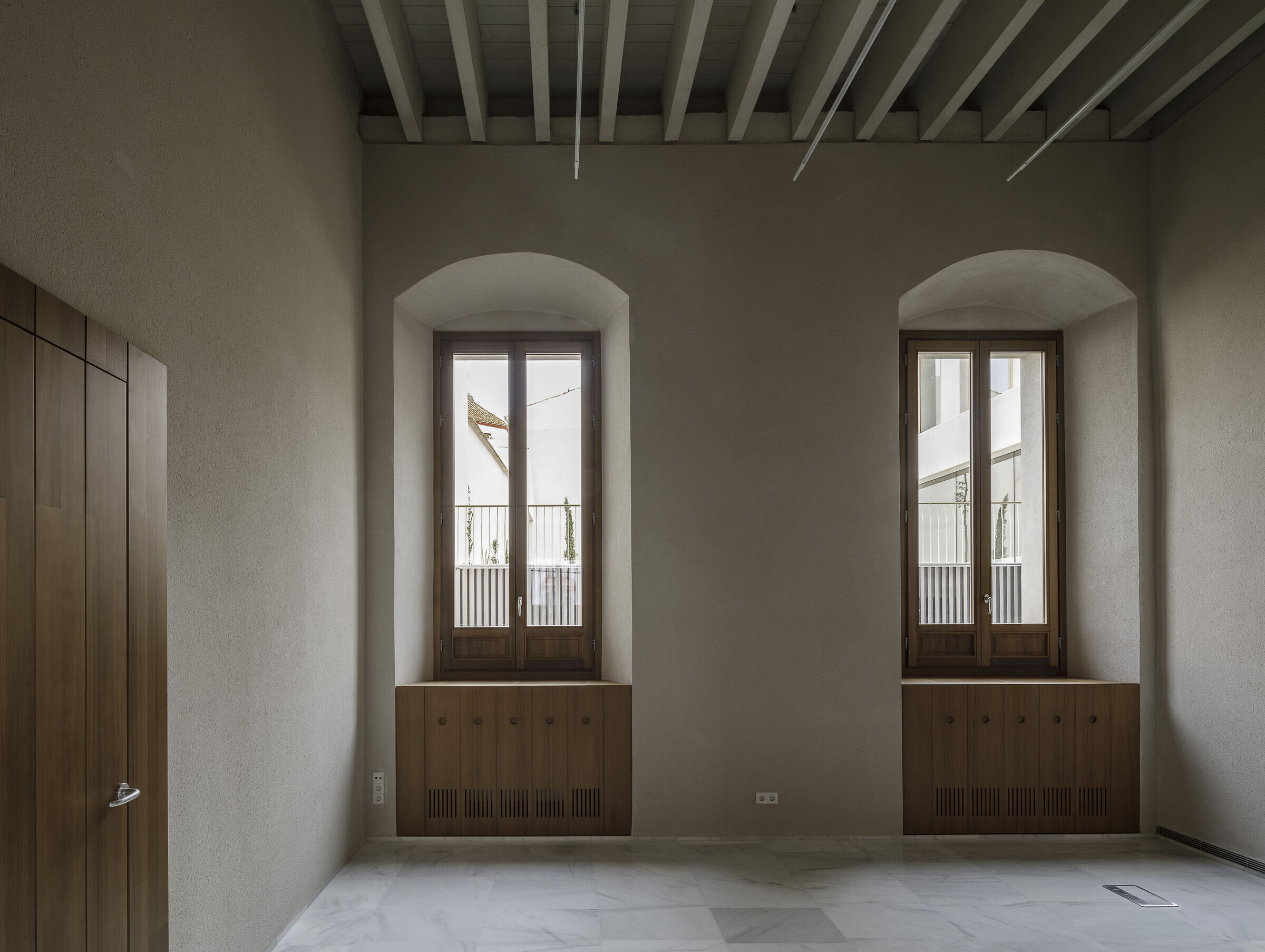
The constructive honesty and ornamental austerity of Ventura Rodríguez's building led us to focus the intervention on recovering the elegant and sober character of its construction and spatial solutions. Construction pathologies are addressed by restoring elements in the best state of preservation, respecting the legacy, and rediscovering its transformation.
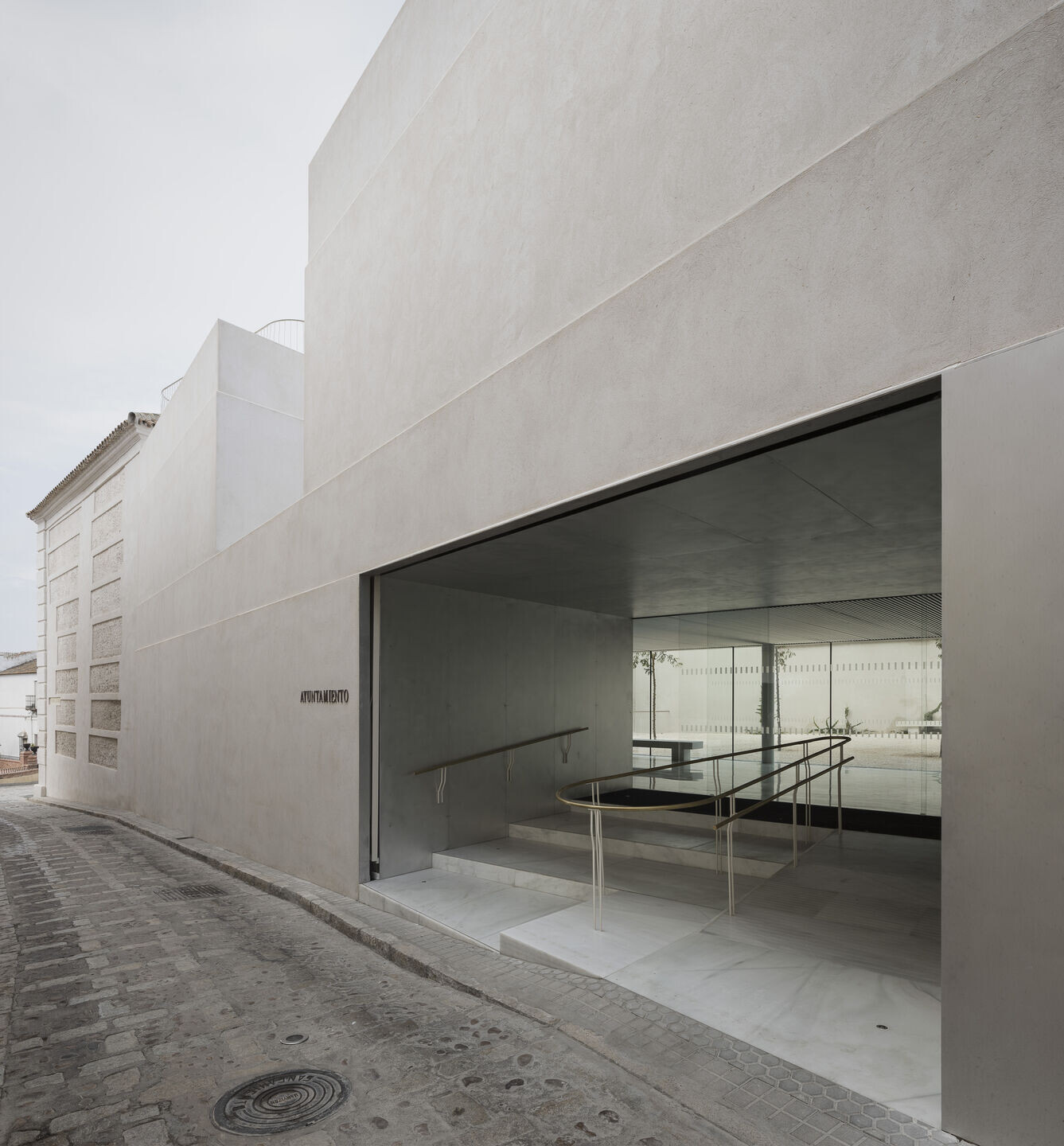
Through the use of materials and construction techniques, a bridge is established between the past and the present. In this sense, a significant portion of the materiality of the ensemble relies on natural lime mortar coatings that, in the case of its facades, incorporate seeds and plant traces that evoke the historical relationship of the municipality with crops and agriculture.

Natural stones, woods, noble metals, and a vegetation treatment typical of our latitude will complete the construction and serve as a reminder throughout the ensemble of the public character of this historic Institution.
